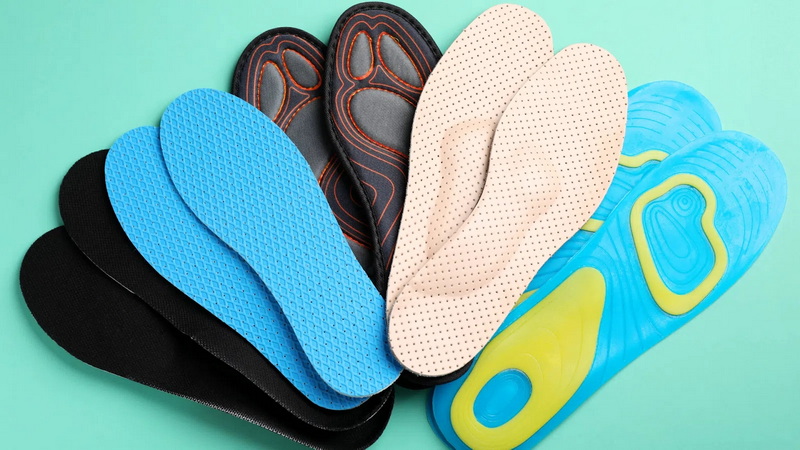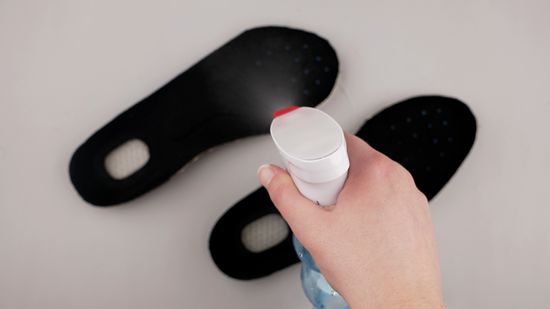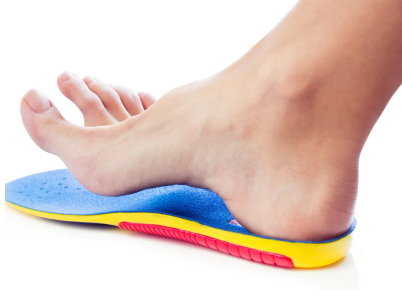










Content Menu
>> Alleviate Foot and Joint Pain
>> Enhance Posture and Performance
>> Address Unique Foot Conditions
>> Support for Various Lifestyles
● How To Get Orthotic Insoles?
>> Step 1: Identify Foot Needs and Usage
>> Step 2: Professional Foot Assessment and Fitting
>> Step 3: Material and Structural Options
>> Step 4: Choosing a Trusted Manufacturer
>> Step 5: Tailoring for Brand and User
>> Step 6: Review Samples and Conduct Wear Testing
>> Step 7: Full-Scale Production and Quality Assurance
>> Step 8: Managing Logistics and Global Delivery
● Types of Orthotic Insoles: Comparing Options
● Additional Advice for Brands and B2B Clients
>> Ensuring Long-Term Partnership
● How To Care for Orthotic Insoles
● Trends in Orthotic Insole Innovation
>> Smart Technology Integration
● FAQs About Getting Orthotic Insoles
>> 1. What materials are best for orthotic insoles?
>> 2. How long do orthotic insoles last?
>> 3. Can orthotic insoles fit all types of shoes?
>> 4. How should orthotic insoles be cleaned?
>> 5. Do Chinese suppliers support branded customization?
Knowing how to get orthotic insoles is fundamental for those who want to improve foot comfort, relieve pain, or reduce the risk of injuries. Whether you're a consumer, retailer, or global footwear brand, understanding the obtention process and customization possibilities for orthotic insoles ensures the best foot care outcomes and business growth opportunity.

Orthotic insoles are specially engineered footbeds inserted into shoes to offer targeted support, alignment, and cushioning. Unlike regular shoe inserts, orthotic insoles are made to enhance body posture, correct foot mechanics, and prevent the progression of many lower limb issues.
Some are mass-produced with ergonomic design, while others are custom-created to fit an individual's unique arch and pressure points. Features often include anatomical contouring, specific heft for arch bolstering, and multi-layer cushioning systems for advanced shock absorption.
These devices address:
- Flat feet and fallen arches
- Overpronation and supination
- Plantar fasciitis and heel spurs
- Chronic lower back or knee pain
- Postural fatigue for those standing all day
With the growth in sports participation, aging populations, and occupational wellness awareness, the demand for orthotic insoles from reliable OEM suppliers has soared among international brands and wholesalers.
Orthotic insoles redistribute pressure away from high-impact zones, easing pain from plantar fasciitis, bunions, and metatarsalgia. For many, this simple footwear upgrade significantly decreases discomfort during daily activities.
Proper alignment of the feet encourages healthy posture throughout the kinetic chain—from feet to ankles, knees, hips, and spine. For runners and athletes, this not only improves performance but also reduces the risk of injuries and chronic fatigue.
No two pairs of feet are identical. Orthotic insoles address personal discrepancies such as leg length variation, arch height differences, and toe deformities, promoting even weight distribution.
From warehouse workers to teachers, anyone spending hours upright can benefit from supportive insoles that lessen fatigue, making each workday safer and more comfortable.
Acquiring the right orthotic insoles is a collaborative process that involves assessment, material selection, manufacturing, and proper fitting. Below are the key steps, refined for brands, wholesale buyers, and individual consumers.
First, analyze what you or your target customers need from orthotic insoles.
- Do you need maximum arch support for flat feet?
- Are you looking for insoles to treat plantar fasciitis?
- Are these insoles for athletic, occupational, or daily leisure use?
- Should they be discreet for dress shoes, robust for boots, or performance-oriented for sneakers?
By clarifying needs, you enable the manufacturer to develop the most functional, marketable product.
A comprehensive foot evaluation, whether in-person or through digital tools, remains crucial for insoles' effectiveness. This step involves:
- Foot shape scanning via 3D technology or imprint foam boxes
- Identifying areas of excess pressure, arch levels, and gait patterns
- Sizing to determine correct insole length and width
Podiatrists, sports stores, or qualified retailers may provide advanced foot analysis, while leading OEM manufacturers offer client scan kits or remote support for overseas buyers.
High-quality orthotics rely on advanced materials for comfort, support, and longevity. Leading materials include:
- EVA (Ethylene Vinyl Acetate): Offers lightweight, flexible, and shock-absorbing cushioning, widely used for both standard and custom insoles.
- PU (Polyurethane): Features high resilience and supportive density, perfect for high-performance applications.
- Gel and Silicone: Provide added pressure relief under critical zones, ideal for heel or metatarsal pain.
- Memory Foam: Molds precisely to foot contours, maximizing comfort for many wearers.
- Cork and Leather: Used in premium or eco-friendly insoles for breathability and a natural feel.
In addition, orthotic insole structure may include:
- Deep heel cups for superior stability
- U-shaped heel cradles to absorb impact
- Metatarsal pads for ball-of-foot support
- Rearfoot and forefoot posting for motion control
The design can be tailored based on intended use, footwear compatibility, and market demand.
Partnering with a professional orthotic insole manufacturer ensures consistent product quality, technical guidance, and branded customization. Look for manufacturers who:
- Hold relevant quality certifications (such as ISO, BSCI, or SGS)
- Provide in-house R&D and fast prototyping services
- Offer flexible MOQs and robust OEM/ODM solutions
- Employ stringent QC processes and after-sales support
Chinese orthotic insole suppliers, due to their technical expertise and production scale, remain the preferred sourcing destination for many global brands and distributors.
Most leading insole manufacturers support extensive customization. Popular custom features include:
- Logo and private label printing
- Custom colors and branding elements
- Fabric choices (breathable mesh, bamboo fiber, velvet)
- Unique packaging (retail-ready blister packs, branded boxes)
- Arch height and cushioning density according to customer demographics
Customization not only differentiates your product but also positions your brand as responsive to specific consumer needs.
Before mass-producing orthotic insoles, sample evaluation is key. Manufacturers will send prototypes for review. Test samples in the target footwear and, if possible, with end users. Assess size accuracy, comfort, and any material odor or irritation.
Wear tests examine:
- Fit and immediate comfort
- Support under prolonged use
- Insole durability after multiple wear/wash cycles
- Slippage or movement inside various shoe types
For brands, this is the best stage to request tweaks or improvements to ensure high user satisfaction.
Post-approval, the manufacturer commences full-scale production. The process includes:
- Raw material inspection for density, flexibility, and rebound
- Automated cutting for exact shapes and thickness
- Layer lamination with heat-bonded adhesives
- Fabric wrapping and stitching or seamless lamination
- Final inspection for dimensional accuracy, appearance, odor, and durability
Final products are packed in branded or neutral packaging as requested and staged for shipment.
A reliable OEM partner will handle:
- Export documentation and certifications
- Multi-modal shipment (air, sea, courier) as specified by order size
- Container consolidation for mixed product orders
- Customs clearance assistance for smooth importation
Transparent communication with your supplier helps you align product launches with market demand.

There are several styles and support levels depending on user needs:
- Full-Length Orthotics: Provide total support across the footbed. Great for athletic shoes and work boots.
- ¾-Length Inserts: Fit better in dress shoes or low-volume footwear.
- Arch-Support Pads: Focus exclusively on mid-foot reinforcement.
- Heel Cushions & Cups: Target heel spurs and plantar pain.
- Sport-Specific Insoles: Designed for niche activities like running, hiking, or soccer, with tuned support zones.
Properly selecting and marketing these types expands your brand's appeal to a wider segment.
Working with an experienced OEM footwear component supplier unlocks:
- Fast sampling cycles from digital scan to prototype
- Full documentation for quality verification and repeat orders
- Collaboration on emerging insole trends (eco-material adoption, smart insoles, etc.)
A reliable partner allows you to scale from pilot launches to global retail rollouts without sacrificing quality. Responsive supply chains, ample production capacity, and ongoing technology investment ensure you stay ahead in the market.
Proper maintenance extends insole lifespan and performance:
- Remove insoles regularly to air out shoes
- Hand-wash with mild soap and lukewarm water
- Let them air-dry (avoid heaters or sunlight)
- Replace every 6-12 months, or sooner if signs of wear appear
Educating customers on care instructions enhances their long-term satisfaction and brand loyalty.
- Choosing insoles solely based on price instead of material quality
- Neglecting to test in several shoe types before full-scale production
- Over-customizing with untested features that might reduce comfort
- Failing to order enough initial samples for representative feedback
- Ignoring end-user education at the point of sale (care, benefits, lifespan)
Proactive attention to these issues reduces complaints and boosts reputation.
Brands are shifting towards sustainable, plant-based or recycled materials. Cork, bamboo fiber, and bio-based foams are gaining attention for both health and environmental benefits.
Some suppliers now offer insoles with integrated sensors to track gait, pressure distribution, or step counts, providing valuable data for athletes and the health-conscious.
Research-driven designs offering variable density, targeted zones, and dynamic arch support continue to grow in popularity. Customization through 3D printing is an emerging trend for high-end markets.
Understanding how to get orthotic insoles enables brands, retailers, and end users to access a critical component for comfort, health, and performance. It is not simply about selecting any insole; it's about defining needs, embracing innovative solutions, and collaborating with an expert OEM partner for maximum satisfaction and value.
By choosing to work with a leading Chinese orthotic insole manufacturer that offers custom design, advanced materials, and global delivery capabilities, your company gains a robust product line that stands out in the international marketplace.
Ready to upgrade your insole portfolio or private label line? Connect with a reputable orthotic insole factory for consultation, sampling, and flexible production support tailored to your business ambitions.

High-density EVA foam is most commonly used for its mix of shock absorption and light weight, but PU and gel are also popular. The right material depends on the user's weight, intended use, and desired durability.
Most quality insoles last between six and twelve months with regular use. However, longevity is affected by activity levels, foot type, and care routine.
It's advisable to select the right length and shape for your shoe type. Full-length insoles may not suit slim profile or dress shoes, while ¾-length inserts offer more versatility.
Gently wash by hand with soap and warm water. Avoid submerging in water for long periods, machine washing, or drying under strong sunlight.
Yes. OEM manufacturers provide wide-ranging design, logo printing, packaging, and material customizations, enabling product differentiation for brands, wholesalers, and retailers.